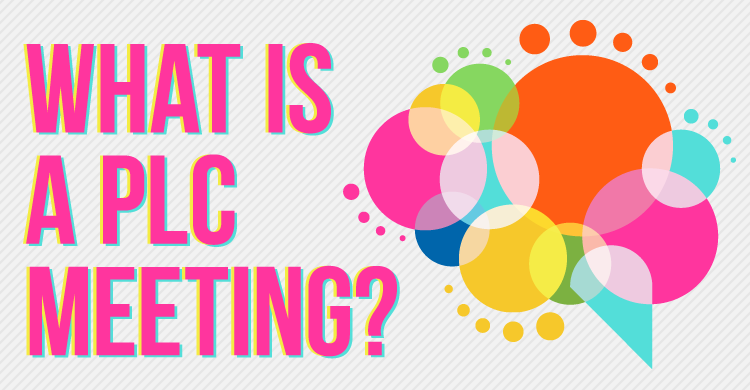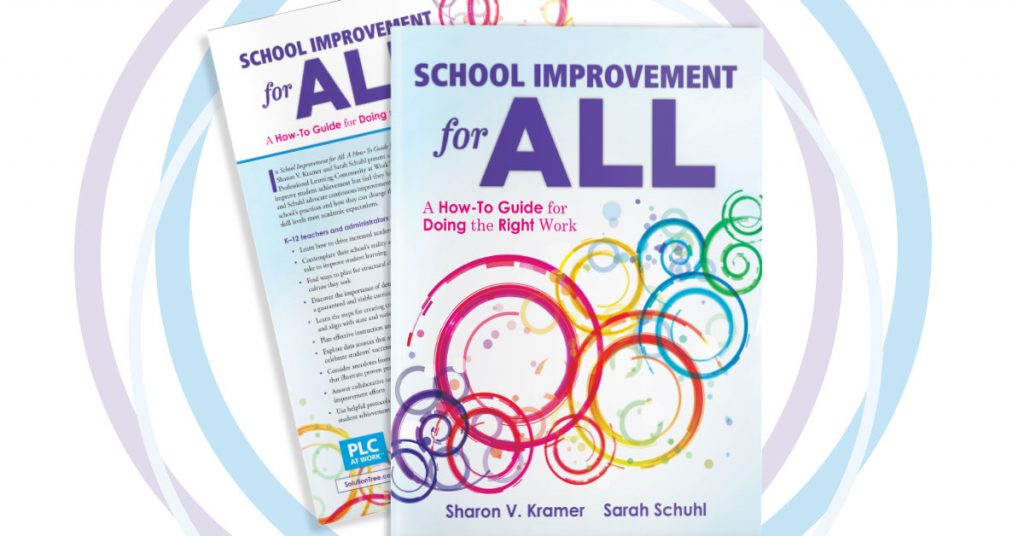PLC is not a meeting. It’s a way of being!
As I work with schools across the nation and beyond, I often hear statements like these: “Our PLCs are meeting on Tuesday.” “We will be ‘PLCing’ on Wednesday afternoon.” “PLCs happen here every other week.”
When I hear this, I know that there is not a clear understanding of what a PLC actually is. Collaboration harnesses the power within a school or district to ensure all students learn at high levels. Collaborative teams are the engines that drive the work of a professional learning community. But so often the term PLC is used to indicate that teachers are meeting as grade-level or departmental teams. The school or district is the professional learning community! And because it is a PLC, it is composed of collaborative teams.
In addition, a PLC is not a meeting. It is the collaborative process used by teachers in a meeting. If you hear “we had our PLC,” then you know that there is not a clear understanding of what a PLC represents. The most common misconceptions surrounding what a PLC is and what it isn’t are centered around the following questions.
Is a PLC a program or new initiative?
A PLC is not a program or new initiative to be implemented. It is a foundational understanding of how we work together in a collective and collaborative manner on behalf of the students we serve. It is a process, not a product. It is the infrastructure that results in continuous learning for students and teachers.
Is a PLC a book study?
A PLC is not a book study. A book study does represent an opportunity for shared learning, collective engagement, and collaborative discussions to improve achievement. But a book study alone is not a PLC.
So, what is a PLC?
As my friend and colleague Brian Butler often reminds us, “It’s not a meeting. It’s a way of being!” It is the way the adults in a school decide to act and work together to ensure high levels of learning for all students. It is a commitment to continuous improvement that requires a shared vision of the kind of school we want to create, along with a clear understanding of the mission or reason we exist. When schools and the educators within them commit to a mission of learning for all students and create a vision and goals that provide a clear pathway to achieve their mission, then they are on the professional learning community journey.
Then, what is a collaborative team meeting?
Collaboration is a systematic process in which we work together interdependently to analyze and impact professional practice to improve our individual and collective results (DuFour, et al. 2016). Collaboration is as much about student learning as it is about teacher learning. As teams of teachers discuss and monitor student learning, they are scrutinizing their practice to determine what works and what could be improved or adjusted. Collaboration improves student achievement and collective teacher self-efficacy simultaneously. It is built on the premise that no one person has all the knowledge, skills, strategies, and patience to meet the needs of every student who comes into his or her classroom. Collaboration ensures a shared responsibility and accountability for learning for all.
Schools and districts organize themselves into teams that share students or content. A team works interdependently to achieve a common goal for which all members are held mutually accountable. Teams can be formed by grade level, course, department, vertically across grade levels, or even electronically across districts to answer the four critical questions of learning in recurring cycles, unit by unit of instruction.
The critical questions that a collaborative team addresses are:
- What should students know and be able to do?
- How will we know that the students have learned the essential standards?
- How will we respond when students do not learn?
- How will we respond when students have already learned?
In the process of answering these questions, teams create a cycle of learning for each unit of study that supports and grows all students. Collaborative teams are the fundamental building blocks of professional learning communities.
These meetings are not a time to discuss bus problems or field trips or the upcoming assembly or an angry parent call. Teachers do not come together to merely discuss their problems or concerns about students. These meetings are learning meetings. The agenda topics revolve around curriculum, instruction, assessment, interventions, and extensions of learning. Most importantly, as teams answer the four questions in a cycle of learning, they engage in specific activities that result in products of collaboration.
“Professional learning communities judge their effectiveness on the basis of results. Working together to improve student achievement becomes the routine work of everyone in the school.” (DuFour 2005, p.39)
Collaboration lite or collaboration right
Collaboration lite is commonplace and easy. Most schools have built time during the school day for teams to meet. This is absolutely essential but not enough. What teams do during that time is more important than the time itself. Collaboration must include the real work of a PLC to truly be collaboration right. This means specifically that teams would be engaged in the following activities:
Question 1. What should students know and be able to do?
- Determine priority or essential standards.
- Unpack or unwrap the priority standards into learning targets.
- Determine the level of rigor of each learning target using a cognitive scale such as Depth of Knowledge or Marzano’s Taxonomy.
- Create learning progressions including any prerequisite skills needed to reach each of the priority standards.
- Develop student-friendly learning targets to partner with students in the learning process.
Question 2. How will we know that the students have learned the essential standards?
- Develop common formative and summative assessments aligned to the priority standards to monitor and diagnose student learning needs.
- Determine scoring and administering agreements to ensure reliable data.
- Pace and administer assessments.
- Analyze assessment data to determine student strengths and the specific types of errors in the data.
Question 3. How will we respond when students do not learn?
- Group students with similar errors and like misconceptions to intervene and re-engage their thinking at the point of need.
- Share students and/or share the work to plan and implement intervention groups.
- Develop a check in for students to demonstrate their new learning.
Question 4. How will we respond when students have already learned?
- Group students to extend their learning of the priority standards with an activity, question, or short task that has not been directly taught during the regular lesson.
- Develop a check in for students to demonstrate their new learning.
Each of these tasks will require teams to collaborate deeply to create the products that are a result of their discussions. This is collaboration right.
A PLC is not a meeting. It’s a way of being. It requires the adults to work together collaboratively on the right work that results in continuous improvement for all students. Most importantly, if you build it, they will learn.
References:
DuFour, R., DuFour, R., and Eaker, R. (2005). On common ground: The power of professional learning communities. Bloomington, IN: Solution Tree (formerly National Educational Service).
DuFour, R., DuFour, R., Eaker, R., and Many, T. (2010). Learning by doing: A handbook for professional learning communities at work (3rd edition). Bloomington, IN: Solution Tree Press.
Kramer, S. V. and Schuhl, S. (2017). School improvement for all: A how-to guide for doing the right work. Bloomington, IN: Solution Tree Press.[author_bio id=”360″]







